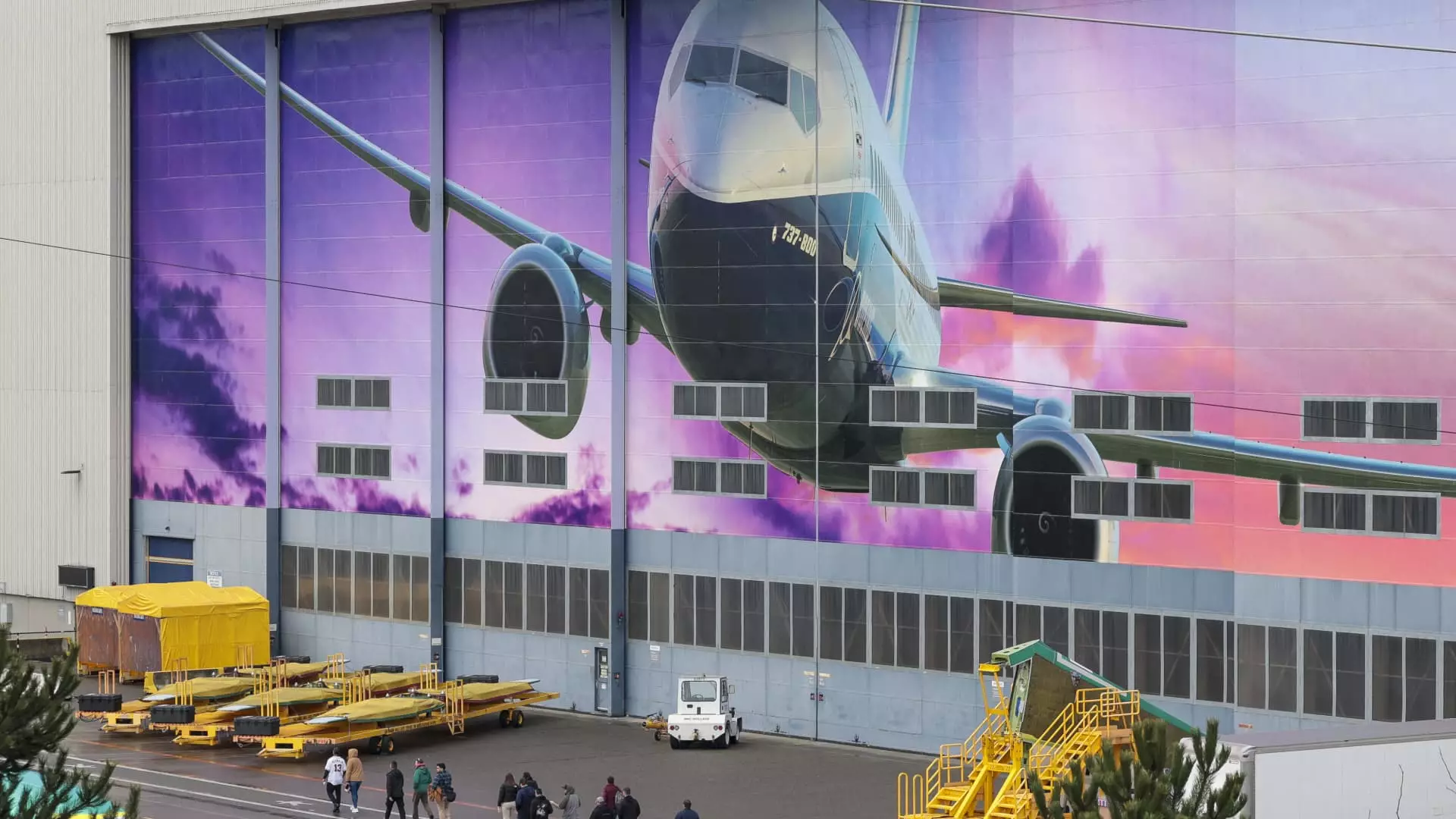Boeing, the aerospace titan that proudly soared as a symbol of American ingenuity, is currently navigating a complex landscape riddled with manufacturing dilemmas and safety scandals. Yet, according to Chief Financial Officer Brian West, there is a glimmer of optimism as the company seems to be inching towards fiscal recovery. A notable reduction in cash burn has become evident this quarter, with estimates suggesting an improvement in the range of “hundreds of millions” of dollars. This financial recovery is not just a momentary blip; it deconstructs into a more profound narrative about the future of American manufacturing and the resilience of an iconic company.
Boeing has endured an arduous journey since it last recorded a profit in 2018, witnessing a staggering cash burn of around $14 billion last year alone. Yet, the company is now at a crossroads, with West proclaiming a positive outlook as aircraft output is set to increase despite a backdrop of challenges. The labor strike significantly impacted operations, shedding light on the fragility of domestic manufacturing in the face of union interest and worker rights. It raises critical questions about the sustainability of American manufacturing in competitive global markets. The increasing complexity of labor relations poses a potential risk, but the measured optimism from Boeing’s executive leadership suggests a steadfast commitment to overcoming these hurdles.
Production Cap: A Double-Edged Sword
West’s comments indicate that Boeing is eager to ramp up its output, targeting an impressive 38 737 Max aircraft and seven 787 Dreamliners per month. However, this ambition is met with restrictions set by the Federal Aviation Administration (FAA) due to prior safety issues. The persistent production cap, originally imposed in response to a catastrophic incident involving a midair blowout, represents a critical challenge for Boeing, which must now find a balance between regulatory compliance and its output goals.
It begs a poignant question about the nature of innovation and safety in aviation. Is it fair to label Boeing as a reckless enterprise when regulatory bodies are well aware of the risks yet continue to allow them to operate under such caps? The cap may be justifiable given past safety violators, yet it inadvertently hampers the company’s ability to rebound swiftly in the market. Herein lies a conundrum—how can Boeing emerge stronger when shackled by its history?
Geopolitical Factors and Market Dynamics
Furthermore, West acknowledged the potential repercussions of proposed tariffs by the administration, a topic of significant contention among industry stakeholders. While he downplays immediate concerns, one cannot overlook that such economic policies often create a battleground of uncertainty that could thwart production plans. The interplay between tariffs and production rates is emblematic of broader challenges faced by the U.S. manufacturing sector.
To facilitate recovery, it’s crucial for Boeing to adapt and pivot swiftly in response to geopolitical shifts. The question remains: will the company embrace innovation and flexibility to remain competitive, or will it become ensnared in red tape? As the stakes grow higher and production ramps up, Boeing’s next steps could redefine the perception of American manufacturing, setting the tone for an industry determined to rise from the ashes of its recent tribulations.

